When in Budapest, Gellert Hill, the Citadella and the Statue of Liberty are definitely a must-visit attraction during your stay. Besides admiring the wonderful view of Buda and Pest from the top of the hill, you can also see the huge reconstruction area of the Citadella (2022-2023… 2024?) and enjoy some fresh air in the forested area and at the park. Don’t worry, it’s also possible to reach the Citadel by public transport!
I walked up Gellert Hill to the Citadel many times during my years here in Budapest, with my friends, family, and pushing baby Alexander on the pram, and walking with him. It is always a refreshing experience in any time of the year; in particular, the sunset from the Citadella is really gorgeous.
Keep reading to learn what to see on Gellert Hill, how to get to the Citadella on foot and by bus, how to visit as a family, and much more.
Find here more Budapest itineraries and ideas for what to do!
Key information about Gellert Hill, Budapest
Gellert hill is a 140-meter-high hill of Dolomite rock, located by the Danube on Buda side (the west side), in Budapest. Considering that Budapest is approximately 100 meters above sea level, the absolute height of Gellert Hill is 235 meters above sea level. In Hungarian, it’s called Gellérthegy (map here). (In feet: 460 feet above Budapest, 770 feet above sea level).
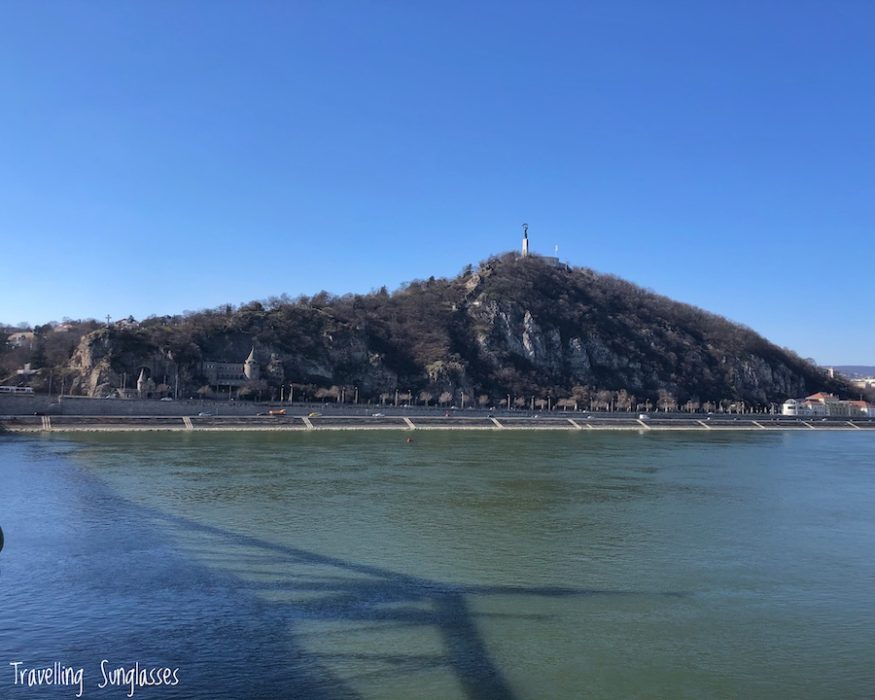
Find it south of Buda Castle hill, between Elizabeth Bridge and Liberty Bridge (the white and the green bridge).
The side towards the Danube and Pest, to the North, is very steep and covered in forest, providing for beautiful pictures in spring and fall. Numerous paths zigzag from the base to the top, with panoramic terraces and benches.
The side towards Buda and the south, instead, rolls down gently in a park with meadows and trees, playgrounds, and residential houses and villas towards the base.
The hill was named after Bishop Gellert, who was killed there by pagans who refused to convert to Christianity.
Gellert Hill has a very eventful history. After Bishop Gellert was killed there by pagans in 1046, it was uninhabited for a while, creating the opportunity for legends of witches and obscure ceremonies. During the Turkish age in the 17th century, a shrine and grave on top of the hill turned it into a pilgrimage destination. From the 18th century, the hillsides were covered in vineyards, especially to the north. The Citadel, built in 1848-49 by the Habsburg rulers, saw military action during WWII and the 1956 revolution. Since 1987, Gellert Hill has been a UNESCO World Heritage site, together with the “banks of the Danube”; also Buda Castle Hill, Pest downtown and Andrassy Avenue are protected. Nowadays, it is a pleasant place to spend a few hours exploring – and the closest place to Budapest downtown for a hike.
On top of Gellert Hill are the two main attractions: the Citadella fortress and the Statue of Liberty. Although the fortress cannot be visited, the panorama is stunning: from the rolling Buda hills and the massive Buda Castle, to the wide and peaceful Danube crossed by bridges, to the Parliament and the domes of Pest side.
It is free of charge to walk around Gellert Hill, the Citadel and the Statue of Liberty. What are the opening hours? Gellert Hill is always open! But I don’t recommend going there in the night.
There are other attractions on Gellert hill, such as the Cave Church and the Gellert Monument, the thermal baths of Gellert Hotel and Rudas at its feet, the park behind it and a children’s playground.
How long does it take to climb Gellert Hill?
Calculate at least 1 hour to visit Gellert Hill, the Citadella and the Statue of Liberty. Consider that, depending on the crowd, the weather and temperature, and what you decide to visit, you can easily spend 2 hours there. Consider it a slow morning after this busy itinerary for your first day in Budapest 🙂
The panorama is lovely at any time of the year: in the winter, the bare trees allow to see more of the city, while in spring, summer and autumn they provide for cover from the sun and create great photo opportunities from small terraces along the way (viewpoint in Hungarian: kilátó or kíiátóterasz).
Although Google Maps says that it takes just some 10 minutes to climb Gellert Hill from Elizabeth Bridge to Liberty Statue, I think it takes 20-30 minutes, especially if you stop for pictures. Same from Liberty Bridge, which is even steeper.
How to get to Gellert Hill and to the Citadella
You can reach the Citadel on top of Gellert Hill on foot, by public transport, and by taxi:
- On foot in 15-30 minutes, from Elizabeth Bridge or from Freedom Bridge, depending on your level of fitness
- By public transport, with bus 27 from Moricz Zsigmond Square to Busulo Juhasz stop in 10 minutes, and then on foot for 5-10 minutes (cost: one ticket/way is 450 HUF (ca. 1,20 EUR) when purchased at the ticket machines or offices)
- By taxi, from Pest centre in less than 10 minutes for less than 3500 HUF/9 EUR (depending on traffic and location, according to Bolt taxi app)
Here is my detailed post on how to reach the Citadella and Liberty Statue on Gellert Hill – updated in 2023 due to the renovation of the Citadel and Liberty Statue.
Climbing up Gellert Hill is a wonderful way to spend some time in nature, to exercise, and to enjoy gorgeous views of the Danube river, the bridges, and Pest side. Definitely consider this hike if the weather is good and if you are a fan of viewpoints. On a hot, sunny day, the tree branches will provide some fresh shadow.
However, if your feet are already sore after long hours of sightseeing, don’t feel guilty for choosing to take the bus or a taxi. The most enjoyable viewpoints are on top of the hill, so you’re not missing out. I describe them below.
The most important thing to remember is that Google Maps is not very accurate, unfortunately. Even though the paths on the hill are quite precise, your location is not accurate; the duration of the walk is optimistic; directions with public transport to “Citadella” or “Liberty Statue” lead you to the bottom of the hill instead of to the top. Overall, it’s a bit tricky to understand where things are, what is higher and what is lower.
What to see on Gellert Hill, Budapest – 2023 update
The main attractions on Gellert Hill are the Citadella fortress and Liberty Statue on top; the Saint Gellert monument by Elizabeth Bridge; and the Cave Church and the Pauline Monastery by Liberty Bridge.
Other attractions nearby are Elizabeth Bridge and Rudas Baths to the North, and Liberty Bridge and Gellert Baths to the South.
If you had enough history during the rest of your days in Budapest, the woods and parks on Gellert Hill are perfect to just relax, enjoy the nature and admire the panorama.
The Citadella
- Opening hours: as of 2023, the Citadella area is closed due to reconstruction. However, the paths around are open 24/7
- Fee: the paths are free of charge
- Services: there is a kiosk called Raketa Pavilon, a toilet in front of it, and a restaurant called Busulo Juhasz Etterem
Let’s start with the main attraction: the massive Citadel fortress.
The Citadel was a U-shaped fortress about 220 meters long and 60 meters wide, with 4-meter-high walls. Being on top of Gellert Hill, it stands 140 meters above the Danube and Budapest.
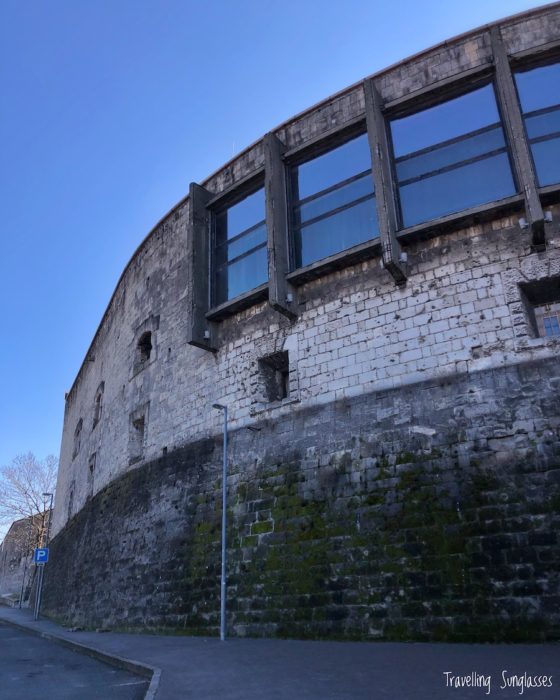
Built by the Habsburg rulers after the failed Revolution in 1848-1849, this stronghold had the military purpose of controlling Castle Hill on Buda side, and the city of Pest. Its 60 cannons were meant more as a demonstration of control, than to actually engage in battle. The relationship between Austria and Hungary slowly improved, thanks to the Compromise of 1867, the unification of Obuda, Buda and Pest into the city of Budapest in 1873, and the departure of Austrian troops.
Parts of the fortress were symbolically demolished after 1894, when it became municipal property; a sort of Bastille to the locals, Budapest wanted to show that this symbol of domination could be destroyed, if only there was enough money.
Afterward, it was used as a prison camp, as accommodation for the homeless, as anti-aircraft battery, and finally as a tourist attraction from 1961. Part of it was turned into a hotel and a restaurant for a while.
As of 2023, the Citadel is closed and is being thoroughly renovated. The overall feeling at the Citadella was of a place with great potential for history, culture, events and entertainment, which unfortunately was underappreciated and abandoned. Hopefully its future will be more glorious!
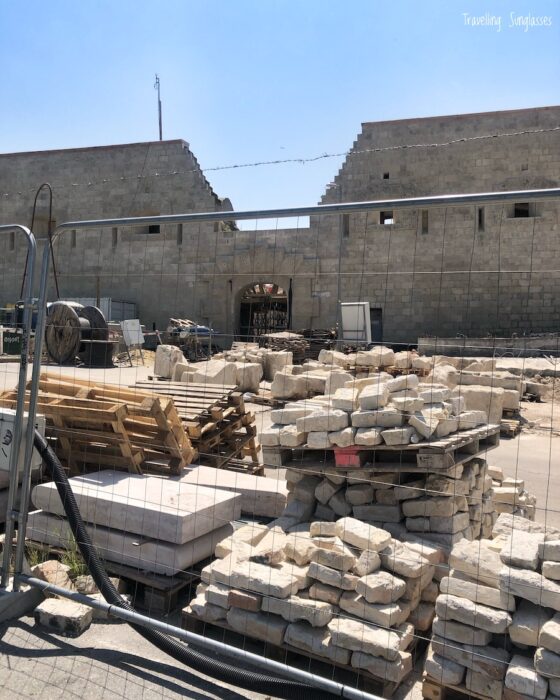
More than the imposing fortress and the visible bullet holes on its walls, what I love the most about this place are the best views of Budapest.
Make sure you admire the view along all the length of the Citadel:
- The first viewpoint called Monolit (map here) features binoculars and it can be quite crowded, because everyone is impressed with the view of Buda Castle, the Danube river and Chain Bridge, and Pest side until the Parliament and Margaret Island
- From the second viewpoint halfway along the Citadella (map here), the view is even wider and nicer (my favourite!). You’ll be walking along the path below: climb up the stairs to the right, and explore the short area still accessible.
- The viewpoints further on are not accessible because of the renovations.
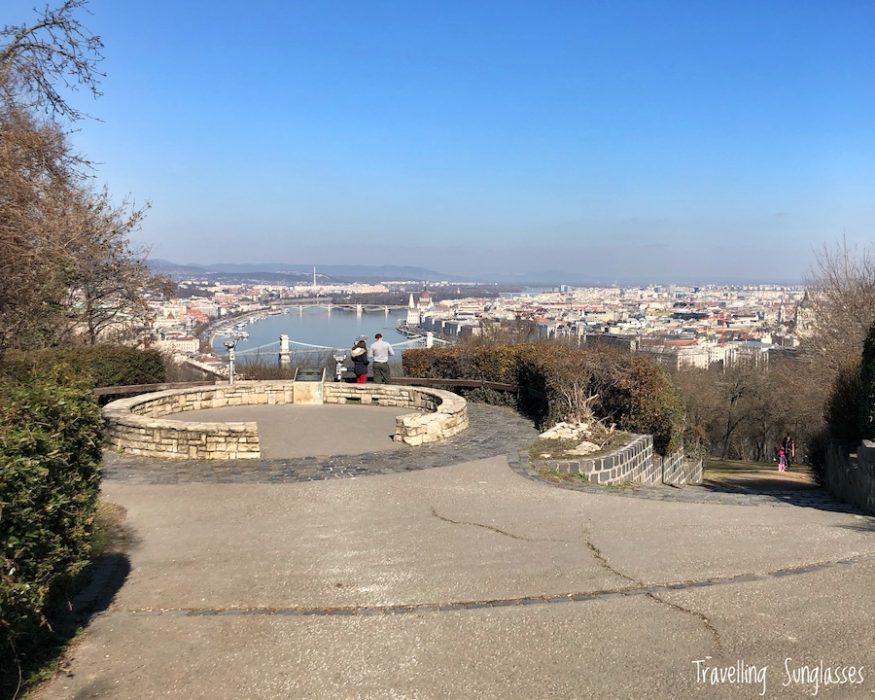
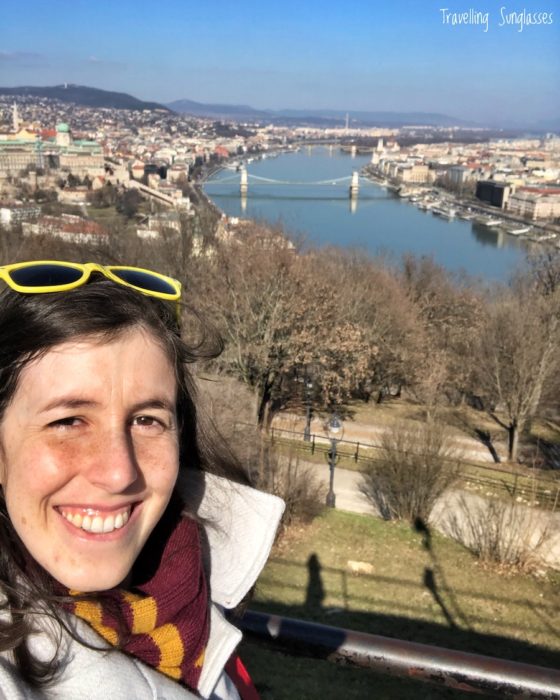
Liberty Statue used to be a great spot to watch the sunset! Nowadays, I think you can do it from the Monolit Viewpoint. I haven’t done it, but here are few tips to watch the sunset from Gellert Hill:
- The sun sets on Buda side (the same side of the river of Gellert Hill), more or less behind Castle Hill. Consequently, sunset is earlier than the sunset time on weather apps
- Get there early to get a good spot
- Bring a jacket or a pullover because it gets chilly quickly
- Bring snacks and drinks for the wait – be civilized and don’t leave any trash
- If you plan to stay until late and admire the beautiful night illumination, you will need a light to walk down the paths. Make sure your phone is charged, or bring a power bank!
- If it’s too crowded, look for one of the viewpoints on the paths
- As a last resort, head down to Liberty Bridge, another great spot for sunset
Gellert Hill can get very dark at night, and is not super safe. So don’t stay there too late.
Liberty statue
- Opening hours: off-limits because of the renovation in 2023, but you can get close enough to see it anyway, 24/7
- Fee: free of charge
The Statue of Liberty is located on the tip of the Citadella fortress, to the South (in Hungarian: Szabadság-szobor, map here). The Liberty Statue is one of the most famous landmarks of Budapest, and rightfully so: standing underneath it generates a powerful emotion of admiration and respect.
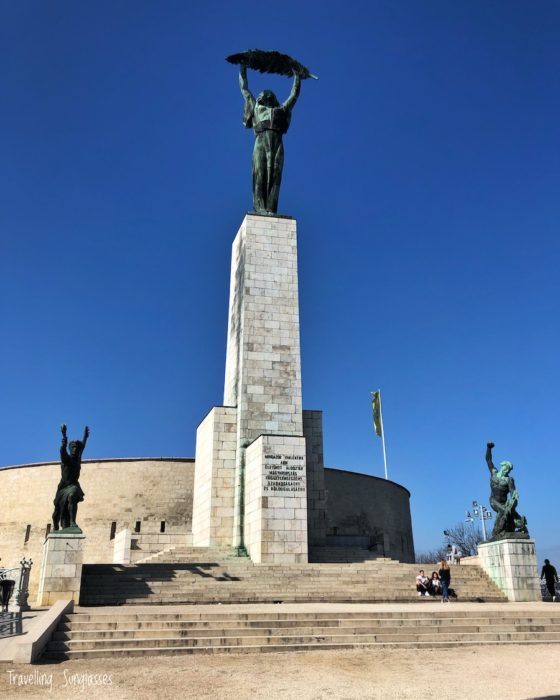
The 14-meter-high statue of a woman holding a palm leaf high above her head commemorates the liberation from Nazi rule by the Soviets in 1945 and celebrates all those who fought for freedom. Its shape is strong and reliable, in Socialist-realist art, instead of delicate and smooth like Greek-Roman statues. To me, she looks imposing yet graceful, a serene guardian overlooking the city and its people.
It was erected in 1948. Thanks to the 26-meter-high pedestal, the Liberty Statue is visible from all along the Danube and most of the city.

The other two statues that form part of the Liberty Monument represent progress and evil: a male figure rushing forward while holding the torch of progress, and a male figure wrestling and defeating a dragon that symbolizes fascism.
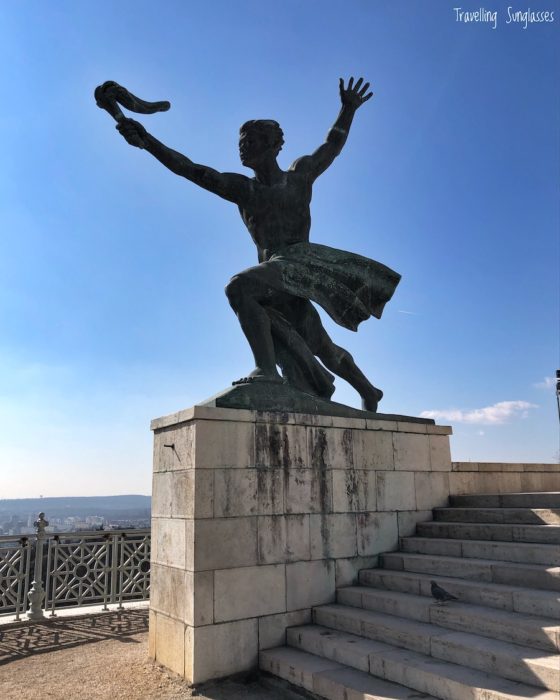
Because the Statue of Liberty became a symbol of Budapest even internationally, it was not moved to the Memento Park of Communist monuments, unlike the statue of a soldier at the base and many other monuments from the rest of the city. The original inscription “To the memory of the liberating Soviet heroes [erected by] the grateful Hungarian people [in] 1945”, however, was modified to “to the memory of all those who sacrificed their lives for the independence, freedom, and prosperity of Hungary” in 1989.
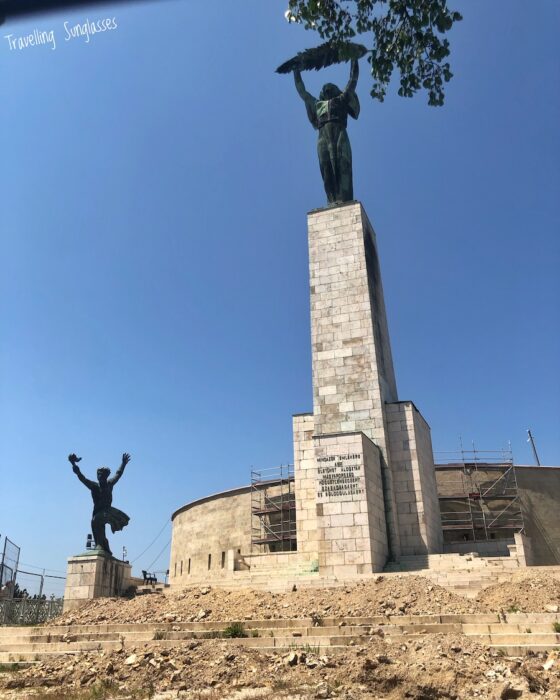
Due to the 2023 reconstruction, you can go from the Monolit view point to Liberty Statue and viceversa along the paths. It’s a pleasant walk, there are plenty of terraces with viewpoints, and even a few benches.
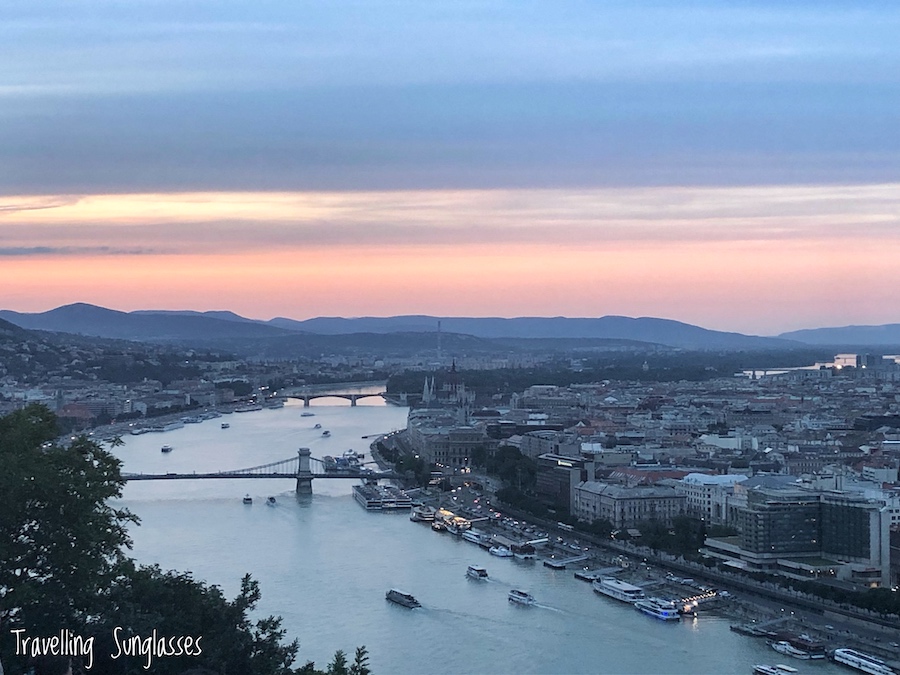
St. Gellert monument
- Opening hours: open 24/7
- Fee: free of charge
Poor Saint Gellert! According to the legend, the missionary was put in a nail-studded barrel by pagan Hungarians and pushed down the hill in this spot. The struggle against Christianity was intense! (map here)
Gellert (in English Gerard), born in Venice around the year 1000, was a Benedictine monk who was involved in the conversion to Christianity by King Stephen I. The first king of Hungary, who was crowned on the first day of the new millenium, realized that Christianity was important in order to make closer ties with Western Europe; therefore, he brought preachers and prelates to Hungary. Gellert was a preacher, an educator, a hermit, and finally a missionary bishop of Csanád county. Unfortunately, after King Stephen I died in 1038, the situation in Hungary became unstable.
The imposing bronze statue surrounded by a colonnade now celebrates Saint Gellert, whose martyrdom took place in 1046 in this spot, according to the legend. There are various accounts of his death, each more gruesome than the next, but the popular one involves Gellert being placed on a cart or barrel, pushed down the hill, and then beaten to death at the bottom during the Vatha pagan uprising (or the other way round). In the end, Christianity was not abolished by the new king; Gellert and Stephen were canonized in 1083; today, they are two of the patron Saints of Hungary.
The monument is located right at the Buda end of Elizabeth Bridge, making it either the first sight of your walk up to the Citadella, or the last on your walk down.
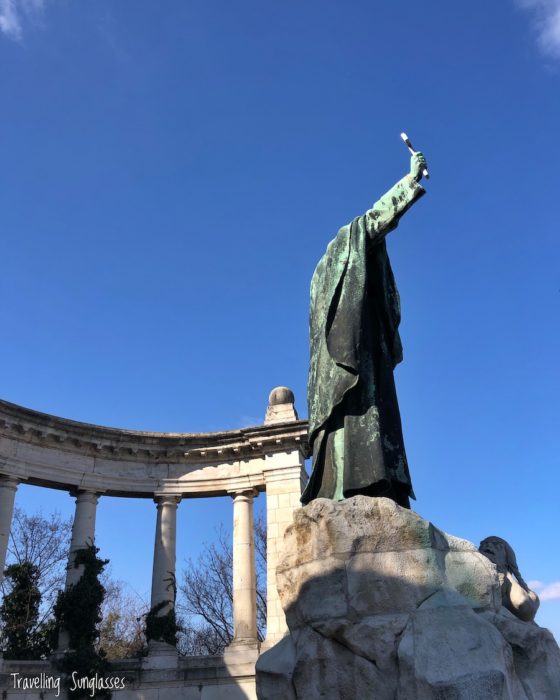
The Cave Church and the Pauline Monastery
- Opening hours: Friday and Saturday from 9.30 to 16.30
- Fee: 600 HUF/person, free under 10 years, with audioguide in Hungarian, English, German, French, Italian, Spanish, Polish, Russian
Budapest Cave Church, Gellert Hill Cave, Rock Chapel, the Church in the Grotto: these are some of the names of Sziklakápolna, a small church and monastery built inside the natural caves carved by thermal waters under Gellert Hill (map here, official website here only in Hungarian)
It is located near the bottom of Gellert Hill, near the Gellert Hotel and Freedom Bridge. The statue of St. Stephen and his horse, close to the entrance, marks a great spot for pictures of Freedom Bridge. The terrace above it is even better!
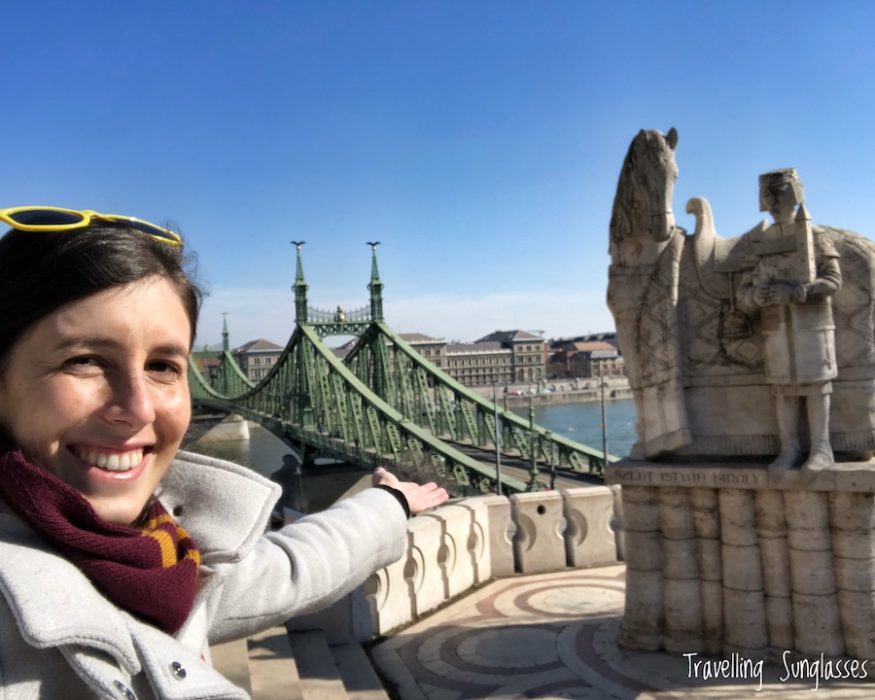
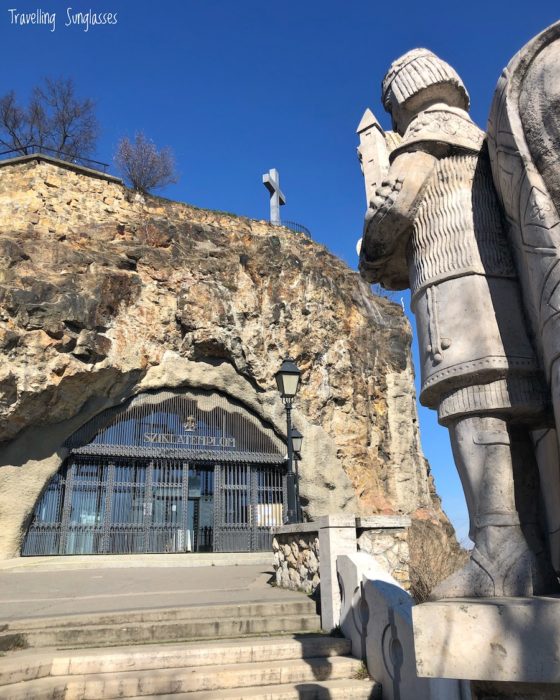
Built in 1926, it was used by the monks of the Order of Saint Paul until the 1950s, when the communist regime banned them and sealed off the cave and church. It was reopened in 1989.
Always fascinated with places of worship, I visited the Cave Church with my family in 2015. It was pretty cool and interesting: the small chapel in the cave was simple yet meaningful; the metal icons and wood-carved objects in the exhibition were simply beautiful.
The iconic and mysterious buildings and towers of the monastery are best admired from the Danube side, with Liberty Bridge behind you (more or less here).
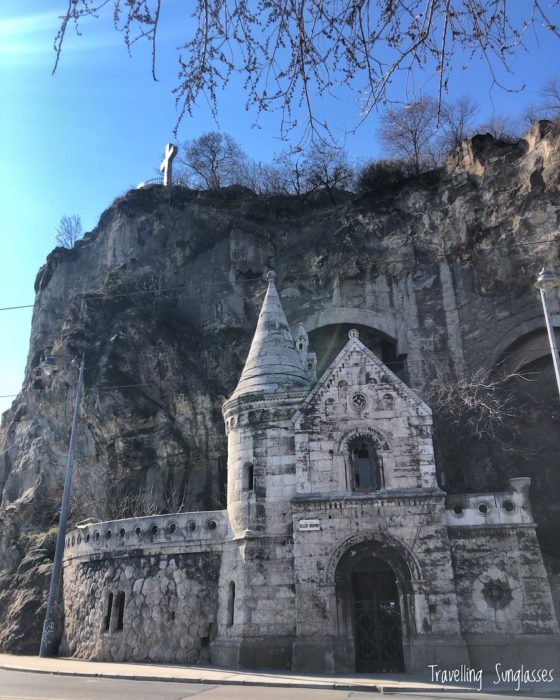
Gellert Baths
- Opening hours: check them here
Even if you don’t plan to enjoy the warm waters of the Gellert spa, I recommend going inside to admire the gorgeous Art Nouveau entrance, its mosaic floor and glass ceiling! Walking around the lobby is free of charge.
The entrance of Gellert Baths (in Hungarian: Gellért Fürdő, map here, official website here) is located to the side of the Hotel, opposite the stairs that lead to the Cave Church. Built in 1918 with the aim of turning Budapest into a city of baths (mission accomplished!), the classy Art Nouveau style makes you feel like you are travelling in time.
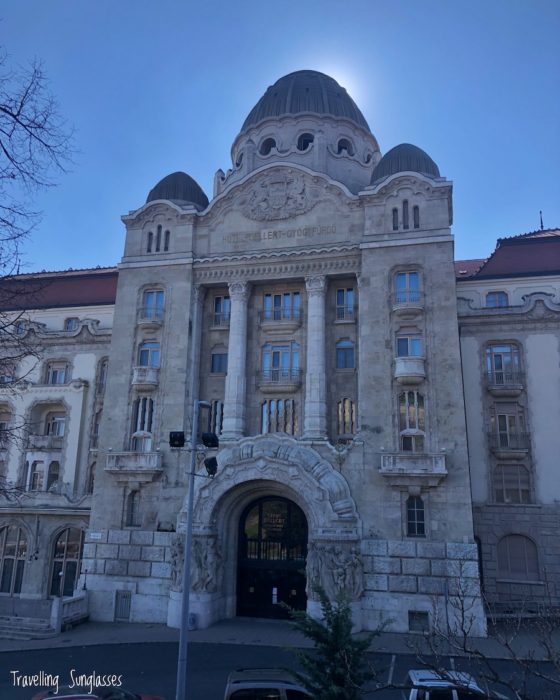
Rudas Baths
- Opening hours: check them here
Rudas Bath is the most famous Turkish bath in Budapest (in Hungarian: Rudas Fürdő, map here, official website here). Located by the Danube on Buda side, close to Elizabeth Bridge, it is composed of a modern wing with a small rooftop jacuzzi pool, and historical stone pools covered by a dome with tiny holes of colorful glass – best admired during the day, when the sun shines through them!
On a peaceful day, Rudas Bath feels extremely cozy and intimate, compared to the widely popular Szechenyi Baths and Gellert Baths. However, on a crowded day, it can feel quite suffocating. If you choose to go to Rudas Baths, keep this in mind to set your expectations.
Elizabeth Bridge
The minimalistic white bridge connects Döbrentei square in Buda to Marcius 15 square in Pest. The original design looked much more similar to Liberty Bridge; however, due to the heavy damage it sustained during WWII, it was completely torn down and re-designed in 1964 to a modern suspension bridge. (In Hungarian Erzsébet híd, map here).
Liberty Bridge
Budapest’s third permanent bridge connects Gellért Square in Buda to Fővám Square in Pest. It was opened in 1896 by Austro-Hungarian Emperor Franz Joseph during the millenium celebrations. It was originally called after Franz Joseph himself; destroyed during the Nazi escape, it was renamed Liberty Bridge during the Communist regime, when it was rebuilt in 1946. (In Hungarian Szabadság híd, map here)
Liberty Bridge is my favourite bridge in Budapest! I love its style and design, the imposing yet graceful structure, the mythical turul birds perched on the pillars with wings stretched.
Most of all, I love to sit on the lowest part in the centre with Darek, with a bottle of wine, and watch the sunset in the summer 🙂
FAQ about Gellert Hill, Budapest
Can you go to Gellert Hill with a baby stroller?
If I did it, so can you! Take bus 27 from Moricz Zsigmond square. If you feel strong, then you can walk down the hill, but you will still have to lift the pram up to do a lot of stairs. I recommend walking down towards Elizabeth Bridge (the white bridge) as there are fewer stairs than going down towards Freedom Bridge (the green bridge).
Overall, however, I don’t recommend it. It’s quite tiring, especially if you’re walking around the city all day. I’d rather propose that you take bus 27 to Busulo Juhasz stop (on top of the hill), walk to the Monolit viewpoint to enjoy the panorama, and take bus 27 back down 🙂
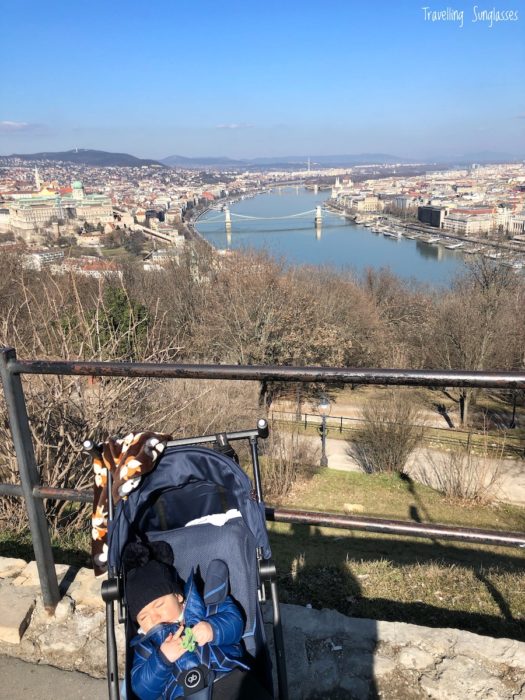
Before heading to take bus 27 to go to the top of Gellert Hill, you could consider stopping by at the Cave Church to admire the view from the terrace in front of it and from the terrace above it. The path leading to it is steep but wide and paved, with just a few steps.
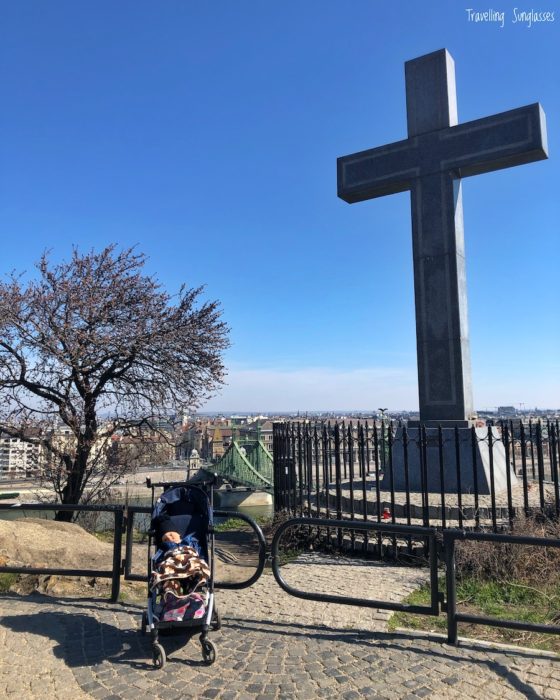
Other things to take into consideration before you go to the Citadella with a baby:
- Breastfeeding in public is accepted, there are lots of benches to do it, or you can sit on the grass under the shade of a tree
- There is a restaurant at Busulo Juhasz bus stop where there should be a restroom with changing facilities
- On a strong sunny day, consider putting sunscreen on baby
- There is some gravel around Liberty Statue, but it’s not too hard to push the stroller
- Baby wear really depends on your level of fitness. I would never hike up the hill with 10 kg of baby on me, but you know what is best for you.
Can you go to Gellert Hill with kids?
I’ve seen a lot of kids on the paths and on top of the hill. They seemed to be having a lot of fun, enjoying the fresh air and the view! I went with Alex when he was 3 years old: with snacks and patience, we walked from the bus stop, to Liberty Statue, and down until Freedom Bridge in a couple of hours.
On the south side of Gellert Hill, there is an awesome playground built with giant pencils called Cerka-Firka (map here). I haven’t been there yet, but it looks very close and really fun. We did try the slides playground – they are seriously steep and fun slides! Map here.
Are there restaurants, cafés and toilets on Gellert Hill?
Yes, there is Restaurant Busulo Juhasz at the bus stop (map here), there is a kiosk called Raketa Pavilon at the edge of the Citadella construction area, and there is a toilet here (I’ve never used it though).
What should I bring and wear to hike up Gellert Hill?
As visiting Gellert Hill will be part of a sightseeing day in Budapest, you don’t need anything too different from what you would bring and wear in the city.
- Wear comfortable shoes with a good sole (no heels, no ballerinas), because the paths and roads are a bit damaged
- Wear layers: you will feel sweaty walking and in the sun, and then chilly in the shadow and in the wind
- Some water could be a good idea, but if you’d rather walk light, you can buy one at the kiosk
What’s the best time to visit the Statue of Liberty and the Citadella on Gellert Hill?
The Citadella and the Statue of Liberty are beautiful all day long. However, consider:
- On a sunny summer day, it will be really hot during the central hours of the day
- The sun rises from Pest side to the East, illuminating the Liberty Statue which looks South-East during the morning
- The sun sets behind Buda Castle in the West, creating a beautiful golden light over the panorama in the late afternoon
- On a windy day, it will be even more windy on top of Gellert Hill
Season-wise, the panorama changes dramatically:
- In the winter, the bare trees look a bit sad and dark, but actually you can see much more of the city without the leaves
- In the spring, the blooming flowers and trees are gorgeous
- In the summer, the light is strong and vibrant
- In the autumn, the foliage of the trees is warm and colorful
Use my guide to decide what is the best time to visit Budapest for you.
Conclusion on what to know before visiting Gellert Hill in Budapest
You know everything and are perfectly ready to explore Gellert Hill and its attractions!
Before you go, have a look at the highlights on our Instagram account to complement what you read: there are even more videos and pictures to help you plan your visit.
Continue planning your perfect trip to Budapest:
- check out my 1-day Budapest itinerary with all the major landmarks,
- the cheap things to do in Budapest (including food),
- the must-know Budapest travel tips by locals,
- decide the best time to visit Budapest depending on what you want to do,
- what Hungarian phrases will be useful,
- and these cute mini-statues hidden all over Budapest.
Is there anything else you wish to know? Ask me in the comments!
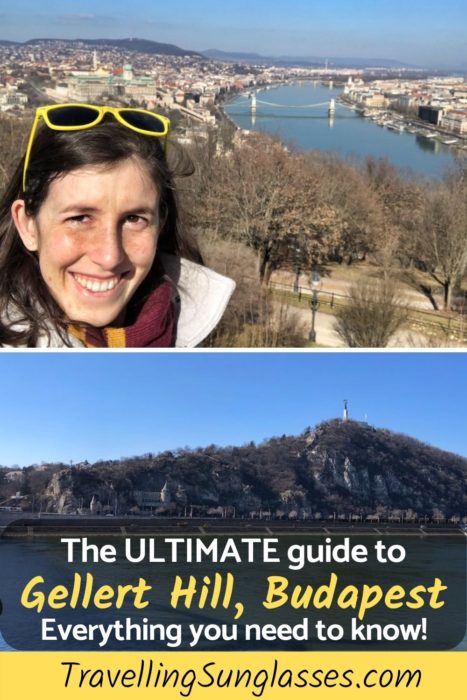

Excellent information. My Wife & i will be in Budapest after 2 weeks. We shall be in Budapest for 4 days. Hope we will be able to cover many places at ease. Gellert hill we shall do at sunset time. Thanks for your tips.
Hi Nishith, I’m glad it was useful! Yes, the sunset from the Monolit viewpoint must be beautiful. Another night, consider also watching the sunset from Pest side, along the Danube, since the sun sets west behind the Buda hills. I hope you get nice weather!
HI. My husband and I will be 68 and 70 when we visit. We both walk a lot but not necessarily up hill. Would you feel the hike up is too steep or average in your opinion? We have done lots of walking in S. Korea which is very hilly and lots of steps. We are from western Canada but haven’t hiked alot in the last 5 years.
Hi Sherry! I’d say the hike can be (feel) steep, but there are plenty of viewpoints where you can stop and rest. Bring some water and snacks with you, and take it easy, maybe plan 2-3 hours so you enjoy it without rush. And if it feels like it’s too much, you can always walk downwards and take the bus instead 🙂
Wow, brilliant information thank you
Hi Lynne, thank you! Glad to be helpful 🙂